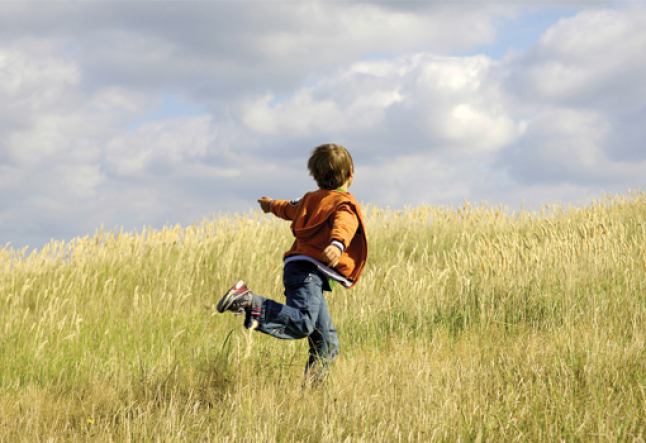spending time outdoors, away from electronics

having the kids play outside
In the past twenty years, there has been a remarkable sea-change in the way that children spend their play-time. The mass computerization of society, along with the advent of child-friendly technologies like Nintendo, the Iphone, the Ipad and the internet have opened up unparalleled opportunities (sometimes wasted) for creative play and exploration on a scale that previous generations could hardly have imagined. Yet one key feature differentiates the play technologies of today from those of decades past: most of today’s play opportunities take place indoors.
A recent study found that since 1990, the average amount of time a child spends outdoors per day has decreased by a staggering four hours. If we presume that the average child spends seven hours asleep, seven hours in school, two hours eating, one hour doing homework, and one hour in transport, then this child is left with only four hours for creative play. If this study is correct, then the average child currently engages in only a negligible amount of outdoor play.
While technological changes are surely at work in this shift, sociological and economic trends cannot be ignored. In the last century, for example, there has been an overwhelming migration from rural areas to urban centers. In 1960, one third of families still lived in rural areas, providing increased access to nature and the outdoors for their children. By 2000, this had dropped to only twenty percent of families, and as the urbanization trend continued, more and more land was appropriated for housing, commercial development, and transportation networks.
Our increasingly urban population faces more barriers to accessing nature than loss of habitat, however. Between the same period of 1960 and 2010, per-capita rates of violent crime almost tripled in the United States, with urban dwellers bearing the brunt of the surge in crime. Families residing in cities thus face at least three major blocks toward spending quality time in nature or outdoor environments:
1) Increasingly cost-effective, complex and entertaining technologies encourage children to spend more play-time indoors;
2) Higher rates of urban development and construction, along with a demographic shift toward cities, has reduced access to natural environments;
3) Urban families – even those with access to parks – may not feel safe allowing their children to play outdoors given stastically significant increases in rates of violent crime.
In my own work as an educator, I have often been surprised at just how little experience many children may have with nature. Buried hip-deep in a garden trench one morning, amending the soil with compost, a group of urban third graders on a field trip approached me to ask what I was doing. Wide eyed with wonder, they peered into my hands to see the mixture of earth and compost that I was spreading, and tentatively asked: “Can we touch it?” With a remarkable display of patience, the thirty-odd children assembled to patiently wait their turn to touch, well, dirt. Surely, they had touched soil before? “No,” came their reply.
On another instance, I had to beg, cajole, and encourage a group simply to sit with me on the forest floor to observe the subtle happenings. “But we’ll get dirty!” was the oft-heard rejoinder, yet within minutes of moving past that particular block, the children were bounding through the brush like jack-rabbits, climbing trees, foraging for berries, and rolling down grassy hills. What was remarkable about this scene was only that they had never before experienced these activities – what many would consider the hallmarks of a well-lived childhood.
Increasingly, psychologists and scientists are linking a number of compelling problems in children’s developmental and cognitive health to a lack of meaningful outdoor experiences. Some social scientists are beginning to piece together evidence of a relationship between over-exposure to media and fast-paced computer games and modern disorders like Attention Deficit and Hyperactivity Disorder. Others, such as journalist Richard Louv, author of “Last Child in the Woods: Saving Our Children From Nature- Deficit Disorder,” are beginning to diagnose society, rather than individuals, as having endemic problems such as stress and fear related to the collective lack of restorative time in natural environments.
As conscious parents attempting to live up to the ideals of a yogic lifestyle, we must do a better job of exposing our children to the wonders – and dangers – of the outdoors. Doing so brings up a host of fears, yet without confronting our own fears, we are likely to inculcate a permanent fear of nature in our own children. Without improved access to nature, our next generation of leaders is unlikely to share the same meaningful experiences with – or desire to protect – nature, which came about not naturally, but through our own childhood outdoor experiences. Think back to your own earliest years: Where did you play? What were your most treasured experiences? In all likelihood, nature played a significant role for us. For the sake of both nature and our children, it’s time to say: Go outside and play!
Doug Morrow is Outdoor Education Coordinator at Kidspace Children’s Museum. kidspacemuseum.org